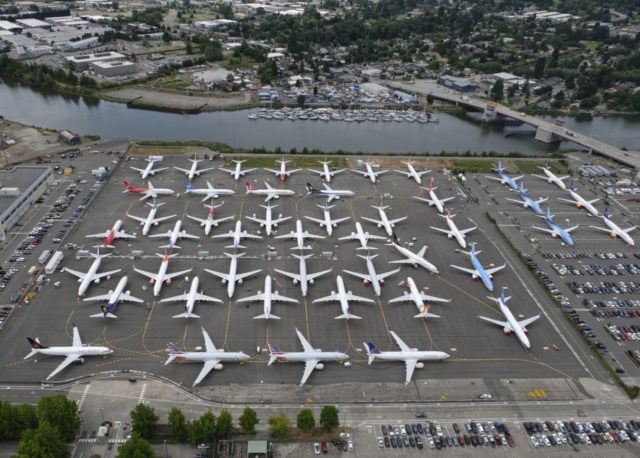
3:01
The struggles of the U.S. manufacturing sector were on clear display in the Commerce Department’s report on durable goods orders in September.
Orders for durable goods, those expected to last three years or more, fell in September, the Commerce Department said Thursday. Orders fell 1.1 percent last month, the first monthly decline since May and April.
Compared with a year ago, orders are down 5.6 percent, the worst drop off since the summer of 2016.
Transportation orders can be volatile month-to-month so many economists strip this category out for a clearer look at sector. Excluding transportation, orders were down a smaller 0.3 percent.
It is likely that the ongoing grounding of Boeing’s 737 Max and the strike by General Motors workers exacerbated the big decline in transportation orders. Commercial plane orders were down 12 percent. New autos and parts orders fell 1.6 percent.
Defense orders can also be lumpy, exaggerating the ups and downs of the manufacturing sector. Excluding defense, orders were down 1.2 percent.
Orders of metals were up 1.5 percent. Fabricated metal product orders, however, declined. Machinery orders rose 0.2 percent, a welcome respite from the declines in the previous two months.
Orders for so-called “core goods,” seen as a proxy for business investment because the category excludes both aircraft and defense orders, fell for the second month in a row. This highlights the widely reported decline in business investment, which is becoming a drag on the economy. There may be some evidence in the data from the very strong 6.4 percent growth in this category back in July.
Shipments for core capital goods fell 0.7 percent in September following a flat August and a 0.7 percent decline in July. These results will factor into third-quarter economic growth, reducing the gauge for nonresidential investment. It is likely that they will give new ammunition to those on the Federal Reserve seeking another cut at the next week’s meeting.
“After this morning’s advance durable manufacturing report from the U.S. Census Bureau, this morning’s new home sales and construction costs from the U.S. Census Bureau, and the National Association of Realtors’ existing-home sales release on Monday, the nowcast of real gross private domestic investment growth decreased from 0.3 percent to 0.0 percent,” the Atlanta Fed said Thursday.
The Atlanta Fed’s GDPNOW model, which aims to measure economic growth based on the latest data, was unchanged at 1.8 percent despite the disappointing durable goods figures.
Orders for computers fell 0.9 percent while orders for phones and other communications equipment jumped 1.4 percent. In the prior two months, communications orders had declined. This might be evidence of the “iPhone effect,” where consumers and businesses hold off on purchases in the summer months prior to the release of Apple’s latest models.
A slight silver lining to the otherwise dim report: August’s overall new orders figure was revised up from 0.2 percent growth to 0.3 percent growth.
Claims
of a Labor Shortage Are Just Not True
|
Posted: Oct 19, 2019 12:01 AM
America's
September unemployment rate fell to 3.5 percent, the lowest level since 1969, according
to the most recent Department of Labor report.
The tight
labor market is forcing companies to hire disadvantaged Americans. For
example, New
Seasons Market, a
West Coast grocery chain, is actively recruiting people with disabilities and
prior criminal records. Similarly, Custom
Equipment, a
Wisconsin manufacturing firm, recently hired several prison inmates through a
work-release program and intends to employ them full-time upon their release.
For the
first time in decades, these disadvantaged Americans are finally winning
significant pay increases. Over the past year, the lowest-paid 25 percent of
workers enjoyed faster wage growth than their higher-paid peers.
Unfortunately,
this positive trend could be short-lived. Corporate special interests are
whining about a labor shortage -- and are spending millions to lobby for higher
levels of immigration, which would supply companies with cheap, pliable
workers.
Hardworking
Americans need their leaders in Washington to see through this influence
campaign and stand up for their interests. Scaling back immigration would
further tighten the labor market, boosting wages and helping the most
disadvantaged Americans find jobs.
The U.S.
economy is the strongest it has been in years. Employers added 136,000 new jobs
in September, marking 108 months of consecutive
job growth.
But
there's still more progress to be made. Approximately 6
million Americans
are currently looking for jobs but remain unemployed. Another 4
million desire
full-time positions but are underemployed as part-time workers. Millions
more, feeling
discouraged about their bleak prospects, have abandoned the job search altogether.
Indeed, among 18 through 65-year-olds, 55
million people
aren't working.
Many of
these folks have limited or outdated skills. Others have criminal records or
disabilities. So they might require a bit more training than traditional job
applicants.
Rather
than put in this extra effort, some big businesses want to eliminate their
recruiting challenges by importing cheap foreign workers. These firms have
instructed their lobbyists to push for more immigration, which would introduce
more slack into the labor market.
The CEO
of the Chamber of Commerce recently claimed that America needs a massive
increase in immigration because we're "out of people." Chamber
officials said their lobbying efforts would center on sizeable increases to
rates of legal immigration.
The
National Association of Manufacturers, meanwhile, recently released a proposal which would effectively double
the number of H-1B tech worker visas, import more seasonal low-skilled laborers
on H-2A and H-2B visas, and grant amnesty to illegal immigrants.
And the
agriculture industry is lobbying for a path to legalization for
illegal laborers and is seeking to expand "temporary" guest-worker
programs to include stable, year-round positions on dairy farms and meatpacking
plants -- jobs that Americans will happily fill for the right wage. The
Association of Builders and Contractors, Koch Industries, and dozens more companies
have called for similar measures.
There are
already 45
million immigrants
in the United States -- 28 million of which are employed -- and counting. More
than 650,000
people crossed
into the United States illegally in the past eight months alone, already
exceeding last fiscal year's totals. And the U.S. government grants an
additional 1 million lifetime work permits to immigrants every year.
Those
figures will skyrocket even higher if business groups get their way. Such an
expansion would hurt hardworking Americans.
The majority
of foreigners who cross the border illegally or arrive on guest worker visas
lack substantial education. Naturally, they seek out less-skilled jobs in
construction, manufacturing, agriculture, and service -- and directly compete
with the most economically vulnerable Americans. The labor surplus created by
immigration depresses the wages of native-born high school dropouts up to $1,500 each year.
Several
proposals under consideration in Washington could alleviate American workers'
woes.
A
recent bill from Senator Chuck Grassley
(R-IA) would mandate all businesses use a free, online system called E-Verify,
which determines an individual's work eligibility in mere seconds.
The
system would make it extremely difficult for employers to hire illegal
immigrants, roughly 40
percent of whom
have been paid subminimum wages at some point. Without a pool of easily abused
illegal laborers, businesses would raise pay for Americans.
Several
senators also recently introduced the Raise
Act, a bill that
would reduce future levels of legal immigration.
It's time
for our leaders in Washington to scale back both legal and illegal immigration.
By doing so, they can further tighten the labor market and force businesses to
bring less-advantaged Americans back into the workforce.
OPEN BORDERS: IT’S ALL ABOUT KEEPING WAGES
DEPRESSED!
"In the decade following the
financial crisis of 2007-2008, the capitalist class has delivered powerful
blows to the social position of the working class. As a result, the working
class in the US, the world’s “richest country,” faces levels of economic
hardship not seen since the 1930s."
"Inequality has reached unprecedented
levels: the wealth of America’s three richest people now equals the net
worth of the poorest half of the US population."
PELOSI,
FEINSTEIN, KAMALA HARRIS AND GAVIN NEWOMS’S MEXIFORNIA
Report:
California’s Middle-Class Wages Rise by 1 Percent in 40 Years
Justin
Sullivan/Getty Images
3 Sep 2019172
6:24
Middle-class wages in
progressive California have risen by 1 percent in the last 40 years, says a
study by the establishment California Budget and Policy Center.
“Earnings for California’s
workers at the low end and middle of the wage scale have generally declined or
stagnated for decades,” says the report, titled “California’s Workers Are
Increasingly Locked Out of the State’s Prosperity.” The report continued:
In
2018, the median hourly earnings for workers ages 25 to 64 was $21.79, just 1%
higher than in 1979, after adjusting for inflation ($21.50, in 2018 dollars)
(Figure 1). Inflation-adjusted hourly earnings for low-wage workers, those at
the 10th percentile, increased only slightly more, by 4%, from $10.71 in
1979 to $11.12 in 2018.
The report admits that the
state’s progressive economy is delivering more to investors and less to
wage-earners. “Since 2001, the share of state private-sector [annual new
income] that has gone to worker compensation has fallen by 5.6 percentage
points — from 52.9% to 47.3%.”
In 2016, California’s Gross
Domestic Product was $2.6 trillion, so the 5.6 percent drop shifted $146
billion away from wages. That is roughly $3,625 per person in 2016.
The report notes that wages
finally exceeded 1979 levels around 2017, and it splits the credit between the
Democrats’ minimum-wage boosts and President Donald Trump’s go-go economy.
The 40 years of flat wages are
partly hidden by a wave of new products and services. They include almost-free
entertainment and information on the Internet, cheap imported coffee in
supermarkets, and reliable, low-pollution autos in garages.
But the impact of California’s
flat wages is made worse by California’s rising housing costs, the report says,
even though it also ignores the rent-spiking impact of the establishment’s
pro-immigration policies:
In just the last decade
alone, the increase in the typical household’s rent far outpaced the rise in
the typical full-time worker’s annual earnings, suggesting that working
families and individuals are finding it increasingly difficult to make ends
meet. In fact, the basic cost of living in many parts of the state is more
than many single individuals or families can expect to earn, even if all adults
are working full-time.
…
Specifically, inflation-adjusted
median household rent rose by 16% between 2006 and 2017, while
inflation-adjusted median annual earnings for individuals working at least 35
hours per week and 50 weeks per year rose by just 2%, according to a Budget
Center analysis of US Census Bureau, American Community Survey data.
Many workers are being paid
little more today than workers were in 1979 even as worker productivity has
risen. Fewer employees have access to retirement plans sponsored by their employers,
leaving individual workers on their own to stretch limited dollars and
resources to plan how they’ll spend their later years affording the high cost
of living and health care in California. And as union representation has
declined, most workers today cannot negotiate collectively for better working
conditions, higher pay, and benefits, such as retirement and health care, like
their parents and grandparents did. On top of all this, workers who take on
contingent and independent work (often referred to as “gig work”), which in
many cases appears to be motivated by the need to supplement their primary job
or fill gaps in their employment, are rarely granted the same rights and legal
protections as traditional employees.
The center’s report tries to blame
the four-decade stretch of flat wages on the declining clout of unions. But
unions’ decline was impacted by the bipartisan elites’ policy of mass-migration
and imposed diversity.
In
2018, Breitbart reported how Progressives for
Immigration Reform interviewed Blaine Taylor, a union carpenter, about the
economic impact of migration:
TAYLOR: If I hired a framer to do
a small addition [in 1988], his wage would have been $45 an hour. That was
the minimum for a framing contractor, a good carpenter. For a helper, it was
about $25 an hour, for a master who could run a complete job, it was about $45
an hour. That was the going wage for plumbers as well. His helpers typically
got $25 an hour.
…
Now, the average wage in Los
Angeles for construction workers is less than $11 an hour. They can’t go lower
than the minimum wage. And much of that, if they’re not being paid by the hour
at less than $11 an hour, they’re being paid per piece — per piece of plywood
that’s installed, per piece of drywall that’s installed. Now, the subcontractor
can circumvent paying them as an hourly wage and are now being paid by 1099,
which means that no taxes are being taken out. [Emphasis added]
Diversity
also damaged the unions by shredding California’s civic solidarity. In 2007,
the progressive Southern Poverty Law Center posted a report with the title
“Latino Gang Members in Southern California are Terrorizing and Killing
Blacks.” In the same year, an op-ed in the Los Angeles Times described another murder by Latino
gangs as “a manifestation of an increasingly common trend: Latino ethnic
cleansing of African Americans from multiracial neighborhoods.”
The center’s board members
include the executive director of the state’s SEIU union, a professor from the
Goldman School of Public Policy at the University of California, Berkeley, and
the research director at the “Program for Environmental and Regional Equity” at
the University of Southern California, Los Angeles.
Outside
California, President Donald Trump’s low-immigration policies are pressuring
employers to raise Americans’ wages in a hot economy. The Wall Street Journal reportedAugust 29:
Overall, median weekly earnings
rose 5% from the fourth quarter of 2017 to the same quarter in 2018, according
to the Bureau of Labor Statistics. For workers between the ages of 25 and 34,
that increase was 7.6%.
The New York Times laments that reduced immigration does force wages
upwards and also does force companies to buy labor-saving, wage-boosting
machinery. Instead, NYT prioritizes "ideas about America’s identity and
culture.” http://bit.ly/2Zp2u2J
NYT Admits Fewer Immigrants Means Higher Wages, More Labor-Saving
Machines
.
Free
Trader Paul Krugman Admits Failure of Globalization for American Workers:
‘Major Mistake’
Jae C. Hong/Associated Press
13 Oct
2019780
3:21
Economist
Paul Krugman, the longtime defender of global free trade and a member of the
failed “Never Trump” movement, now admits that globalization has failed
American workers.
In a column for Bloomberg titled “What
Economists (Including Me) Got Wrong About Globalization,” Krugman admits that
the economic consensus for free trade that has prevailed for decades has failed
to recognize how globalization has skyrocketed inequality for America’s working
and middle class workers.
Krugman writes:
In the past few years, however,
worries about globalization have shot back to the top of the agenda, partly due to new research and partly due to the political
shocks of Brexit and U.S. President Donald Trump. And as one of the
people who helped shape the 1990s consensus — that the contribution of rising
trade to rising inequality was real but modest — it seems appropriate for me to
ask now what we missed. [Emphasis added]
…
The pro-globalization consensus of
the 1990s, which concluded that trade contributed little
to rising inequality, relied on models that asked how the growth of
trade had affected the incomes of broad classes of workers, such as those who
didn’t go to college. It’s possible, and probably even correct, to think of
these models as accurate in the long run. Consensus economists didn’t
turn much to analytic methods that focus on workers in particular industries
and communities, which would have given a better picture of short-run
trends. This was, I now believe, a major mistake — one in which I
shared a hand. [Emphasis added]
Krugman, though, writes that he and
his fellow free trade economists “had no way to know” that globalization of the
American economy or a surge in trade deficits “were going to happen,” though
the anti-globalization movement had warned for years of the harmful impact free
trade would have on U.S. workers — including Donald Trump.
In an interview with SiriusXM
Patriot’s Breitbart News
Tonight, economist Alan Tonelson said that
Krugman’s acknowledging that he and the free trade economic consensus has been
wrong is “better later than never,” but “the damage has already been done.”
LISTEN:
“There’s been an even more
startling, in fact jaw-dropping, development on that front. Paul Krugman, the
famous Never Trumper, the famous pro-free trade economist, the Nobel Prize
winner just published an article … saying that for the past 20 years, he and
his other globalist, free trade economist friends have been substantially wrong
about the effect of globalization, particularly more trade with low income, low
wage countries like China,” Tonelson said.
“They’ve been substantially wrong
about its effects on the American economy and American workers in particular,”
Tonelson said.
Meanwhile, decades of free trade
have spurred mass layoffs, unemployment, and offshoring of high-paying American
jobs while surging trade deficits. Since China entered the World Trade
Organization (WTO), the U.S. trade deficit with China has eliminated at least 3.5
million American jobs from the American economy. Millions of American workers
in all 50 states have been displaced from their
jobs, which have been lost due to U.S.-China trade relations.
John
Binder is a reporter for Breitbart News. Follow him on Twitter at @JxhnBinder.
WEST HOLLYWOOD WELCOME MAT FOR ILLEGALS...
Not a single employer of illegals ever prosecuted in this LA
RAZA SANCTUARY CITY where they print voting ballots in Spanish so illegals can
vote for more!
November: Foreign Workers See Nearly 5X Job Growth of Americans
13 Dec 2018421
2:22
Foreign workers saw nearly five times as much job growth as native-born
American workers did last month, Bureau of Labor Statistics data reveals.
In November 2018, foreign-born
worker employment increased 5.1 percent compared to the same time last year.
Meanwhile, native-born Americans saw an employment increase of only about 1.2
percent year-to-year, almost five times less job growth as their foreign worker
competitors.
The foreign-born workforce — those
who are employed and looking for work — also had significantly higher gains
than native-born Americans. Last month, the number of foreign-born workers in
the labor force increased almost five percent. At the same time, native-born
Americans in the labor force increased only 0.66 percent.
The labor force participation rate
among foreign-born workers increased 1.2 percent, while the labor force
participation rate for native-born Americans increased only 0.2 percent from
year-to-year.
Though foreign-born workers have had significant gains in
the last three months of
President Trump’s economy, native-born Americans’ unemployment dropped by an
impressive 12.5 percent while their foreign competitors’ unemployment decreased
by 5.9 percent.
The fast-growing employment of
foreign-born workers over American citizens is exacerbated by the country’s
wage-crushing national immigration policy whereby about 1.5 million legal and
illegal immigrants are added to the U.S. population every year.
While legal immigrants continued
being admitted to the U.S. to take blue-collar working-class jobs and many
white-collar, high-paying jobs, there remain about six million Americans who
are unemployed, 12 percent of whom are teenagers and nearly six percent of whom
are black Americans.
There remain about 1.3 million
workers who have been jobless for more than two years, 4.8 million workers who
are working part time but who want full time jobs, and 1.7 million workers who
want a job, including more than 450,000 workers who are discouraged by their
job prospects.
OPEN BORDERS: IT’S ALL ABOUT KEEPING WAGES DEPRESSED!
"Inequality has reached unprecedented levels: the wealth of America’s three richest people now equals the net worth of the poorest half of the US population."
PELOSI, FEINSTEIN, KAMALA HARRIS AND GAVIN NEWOMS’S MEXIFORNIA
Report: California’s Middle-Class Wages Rise by 1 Percent in 40 Years
Justin Sullivan/Getty Images
Middle-class wages in progressive California have risen by 1 percent in the last 40 years, says a study by the establishment California Budget and Policy Center.
“Earnings for California’s workers at the low end and middle of the wage scale have generally declined or stagnated for decades,” says the report, titled “California’s Workers Are Increasingly Locked Out of the State’s Prosperity.” The report continued:
U.S. CEOs to Indian Government: Send Us Millions of Your College Graduates
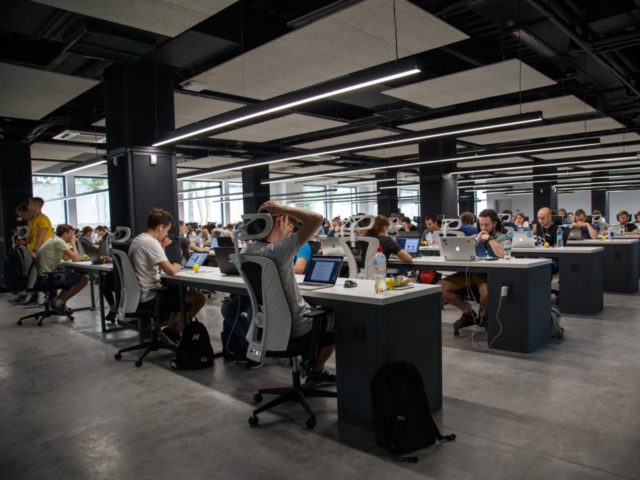
16:43
Many millions of Indian graduates should be allowed to take white collar jobs from U.S. college graduates, says a coalition of top U.S. business leaders.
The U.S. India Strategic Partnership Forum is a spin-off of the U.S. Chamber of Commerce. It is run by the current and former CEOs and presidents of Cisco, Boeing, Deloitte, Adobe, Caterpillar, Dell, FedEx, Medtronic, Marriott, PepsiCo, and other companies. The forum’s 20-page pitch says:
The US-India Strategic Partnership Forum (USISPF) is committed to creating the most powerful strategic partnership between the U.S. and India. Promoting bilateral trade is an important part of our work, but our mission reaches far beyond this. It is about business and government coming together in new ways to create meaningful opportunities that have the power to change the lives of citizens
Amid the corporate blurb, the group admits it wants to allow the free movement of Indian graduates from low-wage India into the high-wage U.S. economy, saying “USISPF’s Workforce Mobility Committee will … continue to make the case for the free flow of skilled labor in both countries.”
“That’s just a fancy way of saying unlimited immigration … [and] is a recipe for a political explosion,” said Mark Krikorian, director of the Center for Immigration Studies. He continued:
U.S. computer careers would become completely foreignized … [and] the middle class could well experience the kind of displacement that much of the [Midwest industrial] working class has felt, potentially with similar consequences, like opioid epidemics.
The group is led by former Cisco CEO John Chambers, and it met with India’s Prime Minister Narendra Modi on October 21.
Had a great interaction with the US India Strategic Partnership Forum. Talked about India’s strides in the world of start-ups, reforms initiated by our Government, steps taken to boost ‘Ease of Living’ and innovation among our citizens. nm-4.com/mkz8
Chambers’ group is aided by several Washington operatives, including former ambassadors Tim Roemer, Richard Verma, Frank Wisner, and Susan Esserman Partner, former Pentagon chief William Cohen, as well as Henry Kissinger and Condoleezza Rice.
The 2nd Annual India Leadership Summit by @USISPForum was full of invigorating discussions on how the US & India can be true #Partners4Growth. Thanks to @CondoleezzaRice, Dr. Henry Kissinger, @DrSJaishankar & @ericschmidt for championing the future of #USIndia relations!
Chamber’s group promises to lobby U.S. and Indian legislators, saying:
USISPF aims to further [the] interests of both nations by engaging with Democrats and Republicans in the House and Senate along with the Parliamentarians in India. USISPF believes that our shared democratic values lie at the heart of the growing U.S.-India Strategic Partnership, and will lead through dynamic exchanges on the legislative side.
The group’s desire for Indian college graduate workers is presented as the fix to a claimed shortage of skilled graduates in the United States — despite plentiful evidence that American graduates are being sidelined and fired so that Indian graduates can take more U.S. jobs. The forum’s pitch says:
Trade is a two-way street. U.S. companies are major job creators in India. Likewise, it is important to recognize the contribution Indian companies make here in America. They have made significant moves to hire Americans announcing tens of thousands of new jobs in recent months. In addition to creating well-paid American jobs, Indian companies are addressing the STEM skills gap, and driving innovation across the US economy. These companies are truly deepening the U.S.-India relationship in part by leveraging high skilled visa programs that are widely recognized as benefiting the US economy. Visa holders bring skills that are not easily available, pay taxes, and help drive the US innovation economy. USISPF’s Workforce Mobility Committee will continue to champion the contributions these companies are making to communities across the US, and will continue to make the case for the free flow of skilled labor in both countries.
The group also says U.S. companies can work with Indian companies to cut U.S. healthcare costs — likely via the increased use of cheaper Indian nurses, therapists, managers, and doctors:
The landscape for this sector is shifting dynamically in both nations, with the governments focusing on improving accessibility and quality of care, while lowering costs. Without compromising on innovation, there is a need to explore new partnerships and business models.
Cheap Indian labor would be a massive windfall for U.S. investors. If U.S. healthcare companies could provide just 500,000 Indians for the U.S. healthcare sector, wages would decline, and investors would see a spike in stock prices.
Chamber’s team received a warm welcome from Modi, partly because the government wants to grow the nation’s economy by exporting graduates into the U.S.-India Outsourcing Economy. In February 2019, the Forsyth County News reported:
Ani Agnihotri, program chair of the USA-India Business Summit … said India has a massive and young population that could provide skilled, English-speaking workers ready to relocate “even at a seven-day notice” and said the majority of doctors in the United Kingdom and about 15 percent in America are of Indian descent.“India has the youngest population in the world. About 25 percent of the population of India, which is 1.25 billion, is below the age of 25,” he said. “We will be the provider of the workforce of the world in about 15 years, after 2035.”
That outsourcing strategy is welcomed by U.S. investors who are now worried about a loss of Chinese imports and exports. The Indian strategy allows them to cut their U.S. payroll costs — and also helps Indians buy U.S. food, energy, services, and products from the growing network of Amazon, Walmart, and Apple stores in India.
India’s population of 20-something men is roughly 127 million. The population of 20-something women is roughly 113 million, for a total 20-something population of 240 million. That supply of labor is 11 times the United States’ 20-something population of 22 million.
Roughly 170 million Indians are enrolled in undergraduate or post-grad university courses, where the quality is extremely uneven, cheating is conventional, and nepotism is normal. But the output of more than 20 million graduates each year Chambers the prospect of importing at least 5 million graduates per year into the U.S. market.
In contrast, U.S. universities now supply U.S. businesses with just roughly 800,000 American graduates with skilled degrees in healthcare, business, engineering, software, science, math, and architecture.
However, the U.S. supply of labor has already been boosted by U.S. visa-worker programs, which keep a population of roughly 1.5 million foreign graduates — including around 800,000 Indians — in U.S. jobs.
In September, the growing Indian population in the United States held a rally for Modi in Texas, where many U.S. politicians applauded him.
I appreciate your presence at #HowdyModi, @SenKevinCramer. Your personal commitment towards strong India-USA ties is deeply admirable. twitter.com/SenKevinCramer…
The Indians population has grown in the United States, mainly because U.S. companies and Indian managers are importing Indian graduates via the visa worker programs.
During his years at Cisco, Chambers encouraged and allowed Cisco managers to hire Indian graduates via the government-provided H-1B visa program. The policy pushed many Americans out of Cisco and has left many Indian managers throughout the company.
This workforce replacement has coincided with the discovery of significant technical problems in Cisco’s products. In March, Wired magazine reported:
The Cisco 1001-X series router doesn’t look much like the one you have in your home. It’s bigger and much more expensive, responsible for reliable connectivity at stock exchanges, corporate offices, your local mall, and so on. The devices play a pivotal role at institutions, in other words, including some that deal with hypersensitive information. Now, researchers are disclosing a remote attack that would potentially allow a hacker to take over any 1001-X router and compromise all the data and commands that flow through it.…The fact that the researchers have demonstrated a way to bypass [the security lock] indicates that it may be possible, with device-specific modifications, to defeat the Trust Anchor on hundreds of millions of Cisco units around the world. That includes everything from enterprise routers to network switches to firewalls. In practice, this means an attacker could use these techniques to fully compromise the networks these devices are on. Given Cisco’s ubiquity, the potential fallout would be enormous.
More than 80 percent of Cisco’s foreign workers come from India, according to MyVisaJobs.com:
India (1005); China (108); Canada (50); Mexico (23); Brazil (13); United Kingdom (13); Pakistan (10); Australia (9); Israel (9); Egypt (7)
These visa workers used a variety of different visa programs to get U.S jobs, according to the site:
H-1B (937); L-1 (313); F-1 (68); TN (8); E-3 (4); L-2 (4); H-4 (3); Parolee (2); Not in USA (1); J-2 (1)
In March, Cisco was awarded the “Padma Bhushan” award from the government of India,
President Kovind presents Padma Bhushan to Shri @JohnTChambers for Trade & Industry (Technology). Founder of JC2 Ventures, Shri Chambers has served as CEO of Cisco and as Chairman of the US-India Strategic Partnership forum.
Other business groups are trying to boost the flow of Indians graduates into the U.S-India Outsourcing Economy.
For example, the immigration director at a Koch-funded advocacy group told a House committee that legislators should allow an unlimited inflow of H-1B workers into the U.S. healthcare sector. “The [annual] cap [of 85,000 work visas] should be repealed altogether for the healthcare sector, as it is for the university and non-profit sector already,” Daniel Griswold, the director of trade and immigration issues at the Koch-funded Mercatus Center in Arlington, Va.
In 2018, U.S. healthcare companies sought to import 22,000 H-1B workers into healthcare jobs.
Currently, Facebook’s Mark Zuckerberg, Amazon’s Jeff Bezos, and Apple’s Tim Cook are supporting a push by Utah GOP Sen. Mike Lee to allow U.S. and Indian companies to recruit and reward many extra Indian workers. Lee’s bill offers Indians an increased allocation of green cards, up from roughly 10,000 cards per year to 60,000 cards per year.
Democratic Sen. Dick Durbin is blocking Lee’s S.386 plan. But Durbin wants to award Indian workers with up to 100,000 green cards per year if they snatch jobs from American graduates.
The bills by Lee and Durbin would also dramatically raise the incentives for Indian graduates to take sweatshop jobs in the United States via the uncapped B1, OPT, CPT, J-1, and TN visa programs. Those sweatshop jobs are valuable to the Indians because they serve as an on-ramp to the H-1B program, which allows employers to provide green cards to workers and their families.
Watch GOP Sen. Mike Lee publicly urge Indian contract-workers to lobby US Senators for a bill offering fast-track citizenship to Indian grads if they take jobs (at low wages) from US grads. No GOP Sen. has rebuked him & no anti-GOP journos 'pounce.' Weird. bit.ly/2MRZyT4
Utah’s Lee has tried and failed to pass his S.386 giveaway bill four times via the fast-track Unanimous Consent process.
The leading technology executive in Utah — Shantanu Narayen, president of Adobe — is an Indian and a member of Chamber’s outsourcing advocacy group.
Adobe is also a significant user of Indian H-1Bs. In 2018, the company filed 583 “Labor Condition Applications” at the Department of Labor to get at least 538 H-1B visas — up from 321 LCAs in 2017. In 2019, Adobe asked for 469 LCAs for H-1B workers.
On October 22, Modi also announced he was meeting with former U.S. and European politicians working with the JP Morgan International Council, which is led by Tony Blair, the former U.K. prime minister. One of the attendees was banker Jamie Dimon, who also is a member of Chambers’ partnership forum.
The U.S.-India Outsourcing Economy
Roughly 800,000 Indian college graduate visa workers now hold a wide variety of U.S. jobs in technology, health care, accounting, and business. Moreover, these visa workers have helped to move more than one million additional U.S. jobs back to teams of graduates working in India.
This onshore/offshore process is described in a discrimination lawsuit against one of the Indian-owned outsourcing firms, Larson & Toubro Infotech.
The firm won a technology support contract from Iconix Brand Group Inc. in New York. The support was managed by one American employee of Larson & Toubro, according to the lawsuit filed by the D.C. firm of Kotchen & Low. The single American ran a New York team, which consisted of roughly eight Indians who likely arrived with H-1B work visas, the lawsuit says. But the single American also ran a team of 20 Indians in India, and he reported to two Indian managers in India. So the visa programs allowed the Indian company to take roughly 30 good jobs from U.S. white-collar workers with just eight visas, according to the lawsuit.
The lawsuit noted that “from 2013 to 2018, LTI received 9,785 new H-1B visas (or visa amendments) and almost 200 new L-1 visas (or visa amendments) – far more positions than could actually exist given that LTI only employs about 7,500 employees in the U.S.” The surplus of visa workers allows the company to sideline American job seekers and instead hire lower-wage Indian visa workers.
The use of cheaper Indian labor created payroll savings for Iconix and profits for Larson. In turn, those profits boosted the company’s stock values for U.S. investors, including the Vanguard International Stock Index.
This outsourcing economy has helped to deny jobs to millions of American graduates and to cut salaries earned by American graduates, both young and old, just as blue-collar wages crashed when U.S. investors used free-trade rules to transfer factories workers into China. The outsourcing pressure helps to explain why white-collar salaries are growing slower than wages for blue-collar jobs in President Donald Trump’s economy.
In fact, the U.S.-India Outsourcing Economy has grown so much that it has clogged the U.S. immigration system. The clog is forcing many of the contract workers to wait more than a decade to get the green cards they were promised by employers in exchange for taking Americans’ jobs.
That long wait helps the companies by keeping their many contract workers stuck in their jobs, tied to their employers — often at substandard wages.
But the long wait also makes it difficult for outsourcing companies to recruit more Indian workers. After all, fewer Indians will sign up for the outsourcing industry if the companies cannot deliver the fast-track green cards.
That green card clog is also a huge problem for India’s government because its entire economic strategy is built around the export of workers into foreign economies.
Many high-tech companies and investors want India’s government to help them get into Indian’s growing marketplace, especially as the trade war with China heats up. So Amazon’s Jeff Bezos, Facebook’s Mark Zuckerberg, and Apple’s Tim Cook, and many other corporations are working with GOP Sen. Mike Lee to unclog the outsourcing and the recruiting process by removing the “country caps” that delay the award of green cards to Indian visa workers.
The pipeline of Indian workers into the United States is built on the H-1B program.
The H-1B program is uncapped for non-profit employers, but companies can get 85,000 new H-1B workers into the United States per year. Each H-1B worker must go home after six years, so capping the companies’ workforce of H-1B workers at around roughly 480,000 workers. That workforce provides companies with roughly equal to one Indian worker for every nine Americans who graduate with skilled degrees each year.
Census data shows how huge numbers of American software graduates have been replaced by Indian & Chinese visa-workers in N.J., California, N.C., Georgia, N.Y., Texas, Virginia, Florida, and other states. Next: Healthcare professionals. @S386 bit.ly/2o0X4cp
But that resident H-1B workforce is just a start.
In 1990, Congress decided to let workers in the H-1B program — and in the smaller, lesser-known L-1 program — to apply for green cards. This 1990 decision created the huge citizenship prize, which is pulling many Indians into the H-1B program and ensuring they will brave low wages, tough conditions, and often illegal working conditions to win the prize.
Up to 300,000 additional Indians are working while waiting for green cards, long after their six-year H-1B visa expired.
Few Americans appreciate the huge value of green cards and citizenship. Yet Congress allows U.S. and Indian investors to freely trade this citizenship prize to 10,000 Indian graduates every year in exchange for a decade or more of profitable work. Of course, millions of foreigners will accept that giveaway deal — and millions of foreigners will feel a moral duty to shove Americans out of their jobs, homes, and careers so they can grab the fantastic prize for their spouses, children, grandchildren and fellow nationals.
Lee’s bill will allow companies to make that barter with roughly 60,000 Indian graduates per year, up from 10,000 per year under current “country cap” rules. The 60,000 cards a year would reduce the wait for green cards down to several years, so encouraging more Indians to join the H-1B program.
But the federal government has quietly created many other programs that allow foreigners to easily take jobs in the United States, regardless of whether Americans want those jobs.
Federal law allows an unlimited number of Indians to get jobs in the United States via the B1 visa for foreign workers, the TN program for businesses based in Canada and Mexico, as well as the uncapped “Optional Practical Training” and “Curricular Practical Training” work permit programs for foreign students and graduates at U.S. colleges.
The mass of OPT and CPT workers in the United States have their own sweatshop economy, where they crowd into shared housing while they work as temporary contract workers for the middlemen subcontractors, which are quietly hired by brand-name Fortune 500 firms. But many Indian graduates do not want to join the OPT sweatshop economy — unless they can also get promoted into the L-1 or H-1B program to get green cards.
So if Sen. Lee or Sen. Durbin unclogs the green card pipeline, more Indian graduates will flood into the feeder pipelines created by the B-1, TN, OPT, and CPT programs so they can get green cards after being promoted into the main L-1 and H-1B pipelines.
Current data shows roughly 800,000 Indians work in the United States — including many who are working-and-waiting for more than 15 years to get one of the 10,000 green cards issued to Indians each year.
If companies can offer more green cards each year, then more Indians will get into the pipeline. In turn, that pressure will push more young and old U.S graduates out of jobs, onto the streets — and likely into the voting booths.



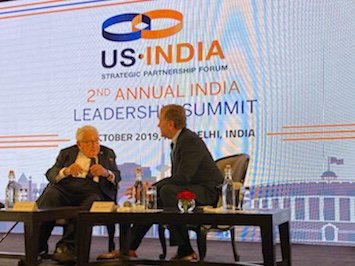
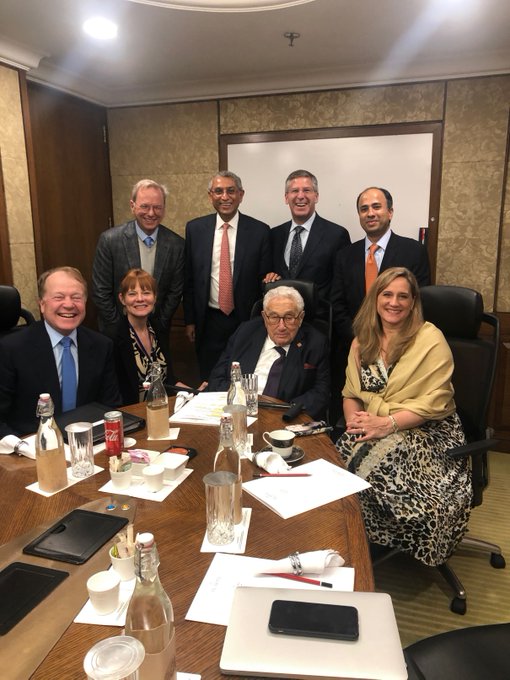



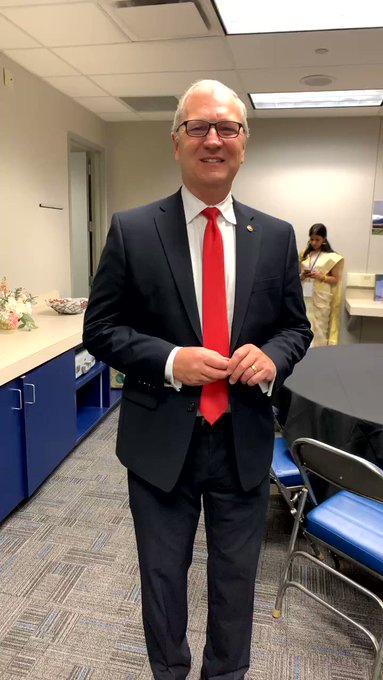
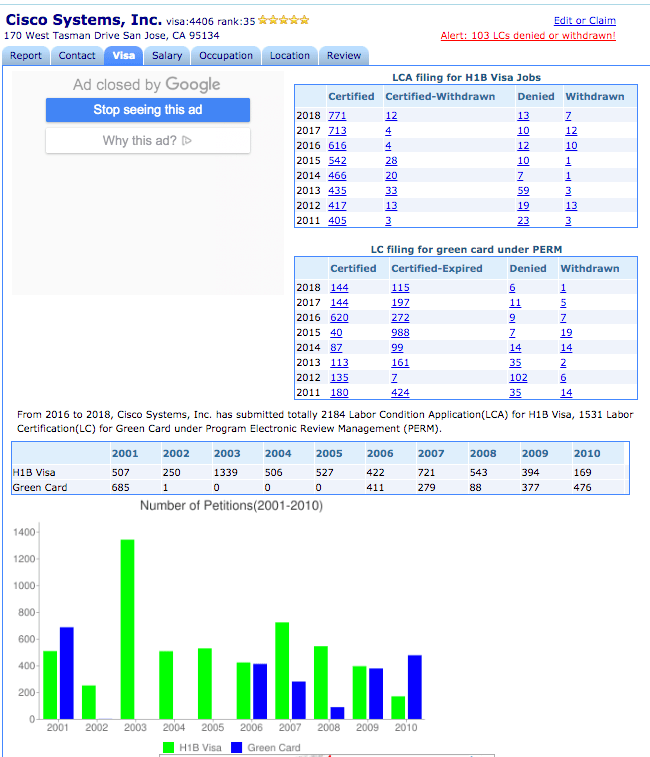



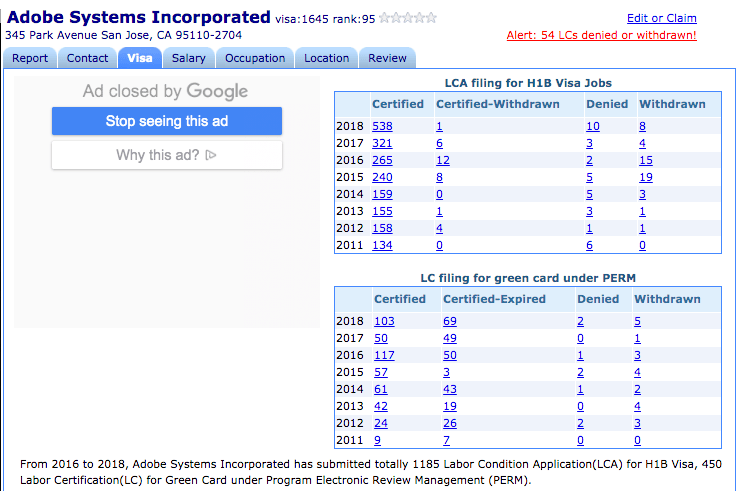
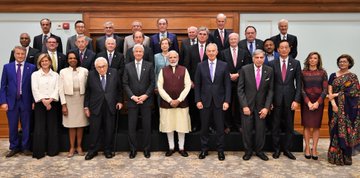

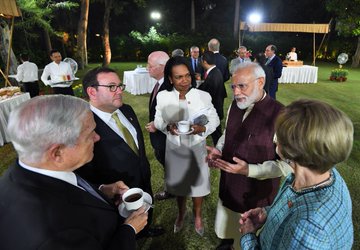
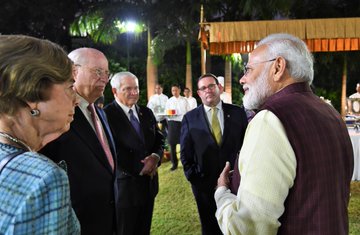

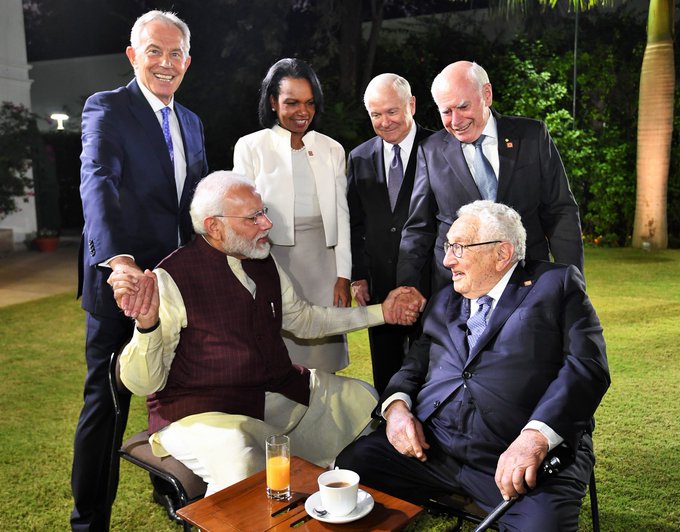
No comments:
Post a Comment